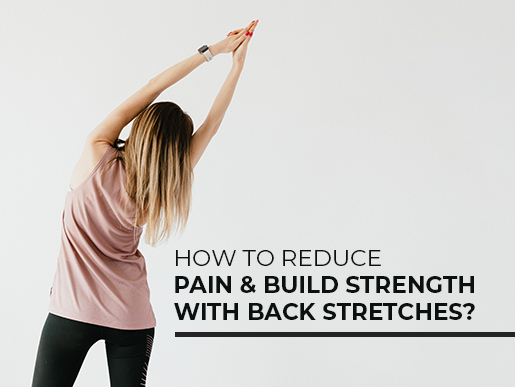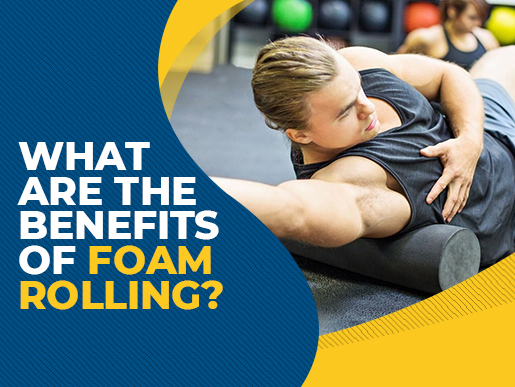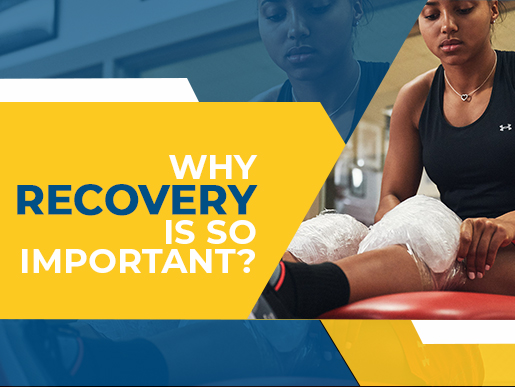Lower back pain is a common health issue, partly because so many things can cause it.
In some cases, it might be a symptom of an underlying condition, such as kidney stones or fibromyalgia. Other times, it is simply a side effect of a sedentary lifestyle or repetitive motions.
Regardless of what is causing your lower back pain, these seven stretches can help to reduce the pain and strengthen the muscles in your lower back.
First, a few quick tips:
You must stretch your lower back with safety and care. Be incredibly gentle and cautious if you have any injury or health concerns. It is best to talk to your healthcare provider first.
You can do these stretches once or twice a day. But if the pain seems to get worse, or you are feeling very sore, take a day off from stretching.
Be mindful of your body’s limits, and do not push your body to do too much. Listen to your body and do what feels best for you in each moment.
As you go through these stretches, take your time, and pay close attention to your breathing. Use your breath as a guide to making sure you do not strain or overdo it. You should be able to breathe comfortably and smoothly throughout each pose or stretch.
1. Child’s Pose
This traditional yoga pose works your gluteus maximus, hamstrings, and spinal extensors. It helps to relieve pain and tension all along your spine, neck, and shoulders.
Its relaxing effect on your body also helps to loosen up tight lower back muscles, promoting flexibility and blood circulation along the spine.
To do Child’s Pose, follow these steps:
- With your hands and knees on the ground, sink back through your hips to rest them on your heels.
- Hinge at your hips as you fold forward, walking your hands out in front of you.
- Rest your belly on your thighs.
- Extend your arms in front of or alongside your body with your palms facing up.
- Focus on breathing deeply and relaxing any areas of tension or tightness.
- Hold this pose for up to 1 minute.
You can do this pose several times during your stretching routine. Feel free to do it in between each stretch.
Modifications
If you feel like you need some extra support, you can place a rolled-up towel on top of or underneath your thighs.
If it is more comfortable, widen your knees and rest your forehead on a cushion.
2. Knee-to-chest stretch
This stretch relaxes your hips, thighs, and glutes while promoting overall relaxation.
To do a knee-to-chest stretch, follow these steps:
- Lie on your back with both knees bent and your feet flat on the floor.
- Keep your left knee bent or extend it straight out along the bottom.
- Draw right knee into your chest, clasping your hands behind your thigh or at the top of your shinbone.
- Lengthen your spine down to your tailbone and avoid lifting your hips.
- Breathe deeply, releasing any tension.
- Hold this pose for 1 to 3 minutes.
- Repeat with the other leg.
Modifications
Place a cushion under your head for extra padding. You can also wrap a towel around your leg if it is hard for your arms to reach.
To deepen the stretch, tuck your chin into your chest and lift your head toward your knee.
3. Piriformis stretches
This stretch works your piriformis muscle, which is found deep in your buttocks. Stretching this muscle relieves pain and tightness in your buttocks and lower back.
To do a piriformis stretch, follow these steps:
- Lie on your back with both knees bent and your feet flat on the floor.
- Place your right ankle at the base of your left thigh.
- Then, place your hands behind your left thigh and pull up towards your chest until you feel a stretch.
- Hold this position for 1 to 3 minutes.
- Then do the opposite side.
Modifications
To make the stretch more comfortable, keep your bottom foot planted on the floor. Rest your head on a cushion for support.
4. Seated spinal twist
This classic twist works your hips, glutes, and back. It increases mobility in your spine and stretches your abdominals, shoulders, and neck. The pressure of this stretch also stimulates your internal organs.
To do a seated spinal twist, follow these steps:
- Sit on the edge of a cushion with both legs extended out in front.
- Bend your right knee and place your foot to the outside of your left thigh.
- Bend your left leg, putting your foot near your right thigh.
- Lift your arms with your palms facing each other.
- Starting at the base of your spine, twist to the right side.
- Place your right hand behind you for support.
- Place left arm around the right leg as though you are hugging it or bring your upper arm to the outside of your thigh.
- Hold this pose for up to 1 minute.
- Repeat on the other side.
Modifications
To make this pose more comfortable, keep your bottom leg straight.
For an extra stretch, add in neck rotations during this pose by inhaling to look forward and exhaling to turn your gaze backward. Do 5 to 10 on each side.
5. Pelvic tilt
Pelvic tilts build Strength in your abdominal muscles, which helps relieve pain and tightness in your lower back. They also have a beneficial effect on your glutes and hamstrings.
To do a pelvic tilt, follow these steps:
- Lie on your back with both knees bent and feet flat on the floor.
- Engage your abdominal muscles as you flatten your back against the floor.
- Breathe normally, holding this position for up to 10 seconds.
- Release and take a few deep breaths to relax.
- Do 1 to 3 sets of 3 to 5 repetitions.
6. Cat-cow stretch
The cat-cow stretch is a great way to wake up your spine while also stretching your shoulders, neck, and chest.
To do the cat-cow stretch, follow these steps:
- Come onto all fours in a tabletop position (hands and knees on the ground).
- Press into your hands and feet as you inhale to look up, allowing your belly to fill with air.
- Exhale, tucking your chin into your chest and arching your spine toward the ceiling.
- Continue this pattern of movement, moving with each breath.
- Do this for 1 to 2 minutes.
Modifications
If you have wrist concerns, place your hands slightly forward instead of directly under your shoulders. If you have any knee concerns, place a cushion under them for padding and support.
For deeper holds, remain in each position for 5 to 20 seconds instead of moving with each breath.
7. Sphinx stretches
The sphinx stretch is a gentle backbend that allows you to be both active and relaxed. This baby backbend stretches and strengthens your spine, buttocks, and chest.
To do the sphinx stretch, follow these steps:
- Lie on your stomach with your elbows underneath your shoulders and your hands extended in front, palms facing down.
- Set your feet slightly apart. It is okay for your big toes to touch.
- Gently engage your lower back, buttocks, and thighs as you lift your head and chest.
- Stay strong in your lower back and abdominals, breathing deeply.
- Press your pelvis into the floor.
- Gaze straight ahead or gently close your eyes.
- Hold this pose for 1 to 3 minutes.
The bottom line
You use your lower back for many things, from walking and running to simply getting out of bed in the morning. Please keep it in good working order with regular stretching to relieve tension and build strength.
Keep following the recovery articles to continue your fitness journey without any obstacles- https://fns360.com/category/movement-and-recovery/.






